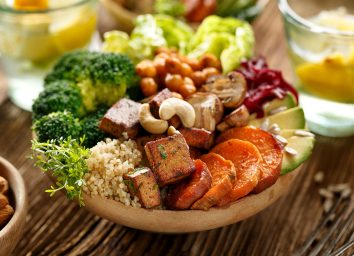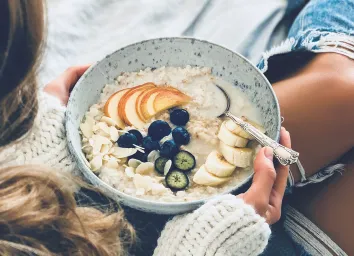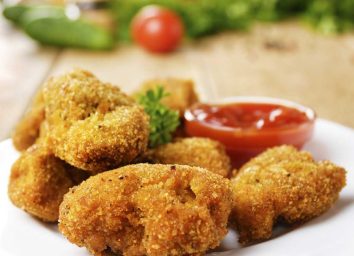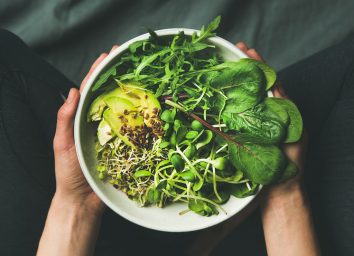Here’s Why You Might Want to Try a Flexitarian Diet
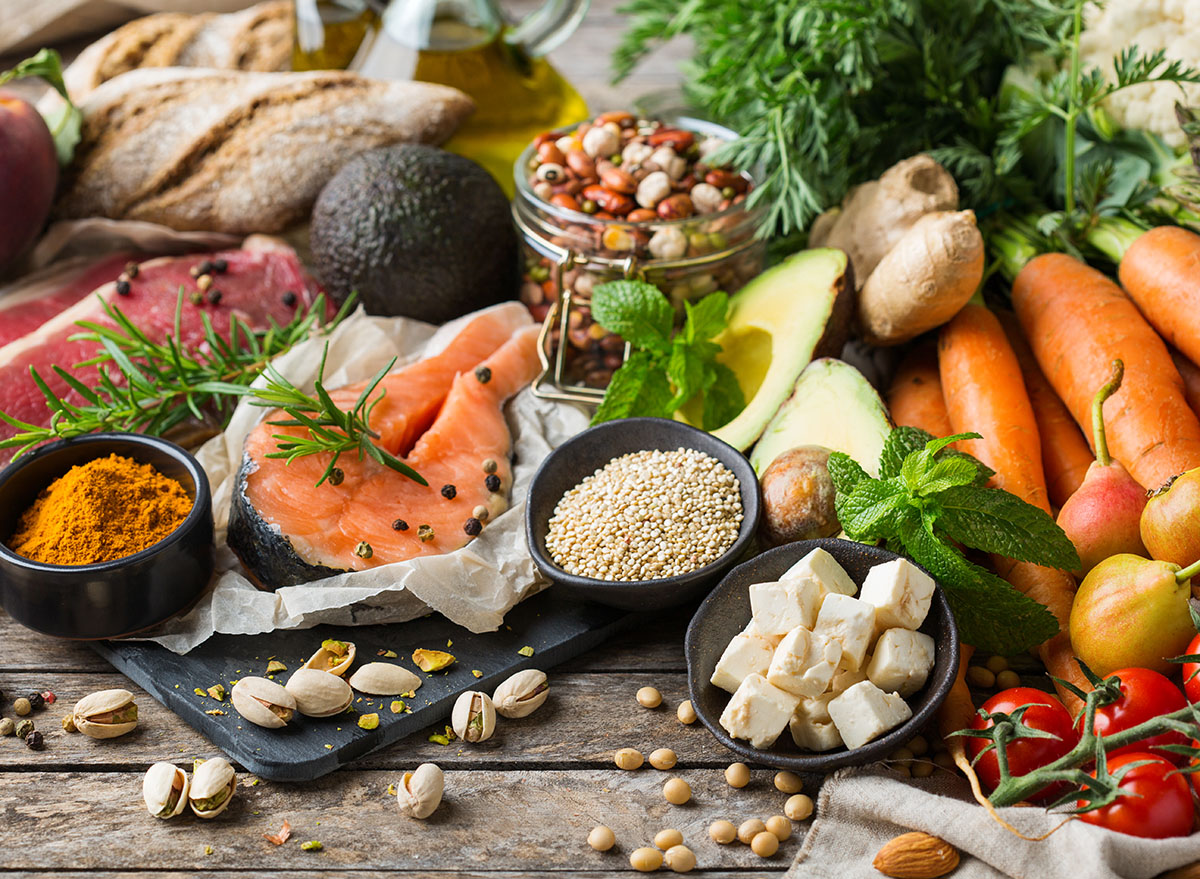
The hottest craze to hit lovers of all things plant-based is the flexitarian diet—and one study shows that 23 percent of Americans define their eating habits this way. And if you’re looking to reduce your grocery bill, lose weight, and help save the planet, it may well be the perfect diet for you, too.
But what exactly is a flexitarian diet, and should you try it?
What is a flexitarian diet?
Well, as its name suggests, a flexitarian diet takes a more “flexible” approach to a plant-based way of life. Unlike proponents of other plant-based diets, such as the pescatarian (avoids all meat, but eats fish), the vegetarian (avoids all meat including fish), the lacto-vegetarian (avoids all animal products except dairy), the ovo-vegetarian (avoids all animal products except eggs), or the vegan (avoids all animal products), a flexitarian is less worried about what they can’t eat and more about what they can.
There are no strict rules governing a flexitarian lifestyle, but the idea is that one eats a primarily plant-based diet, while still indulging in meat or fish on occasion. A flexitarian will tend to avoid processed foods such as sweets and candy, even if they are plant-based. Instead, a flexitarian opts for whole foods, meaning foods with no ingredient lists such as apples, olive oil, walnuts, and lima beans.
Most flexitarians also make sure that the meat and fish they do eat is of the utmost quality—this means organic, free-range, grass-fed meat and dairy, pastured chicken and eggs, and sustainably-caught fish.
A flexitarian lifestyle has no strict rules, but one could imagine that of the 21 meals in a given week, at least two-thirds would be fully plant-based. In addition, when meat is included in a meal, it might not be the cornerstone: a dish of veggie-rich pumpkin pad Thai topped with just a bit of chicken, or a kale and apple salad with just a touch of bacon might be good mains on nights when you are opting to serve meat.
Why should you try a flexitarian diet?
Eating flexitarian is cost-efficient.
Meat tends to be a more expensive protein source than vegetables, especially if you’re opting for top-quality meat, which you should if you want to reap the health benefits. Wild-caught salmon and grass-fed beef have both been shown to have a healthier ratio of anti-inflammatory omega-3 fats to omega-6 than farmed salmon or grain-fed beef. Because these healthier meats can sometimes cost nearly twice as much as their conventional counterparts, making them a “sometimes” choice is better for your wallet.
On days when you’re not enjoying meat or fish, you can still cook up an easy, filling vegetarian meal with cheaper plant-based protein sources such as beans, lentils, or quinoa. The added fiber in vegetarian meals will keep you fuller for longer, too.
A flexitarian diet has plenty of health benefits.
The health benefits of eating a plant-based diet have been touted far and wide, with studies showing that the lifestyle can reduce your risk of heart disease, cancer, diabetes, and even cognitive impairment. And while studies on the health benefits of a plant-based lifestyle focus predominantly on either a vegan or vegetarian diet, one study from the Icahn School of Medicine in New York found that people who eat a diet rich in plants were 42 percent less likely to develop heart failure—even if they didn’t cut out meat entirely.
A flexitarian diet is helpful for the environment.
Animal agriculture is one of the biggest environmental concerns today: according to research from the Food and Agriculture Organization of the United Nations, it is the source of about 14.5 percent of global greenhouse gas emissions and 60 percent of agricultural greenhouse gas emissions worldwide. Even low-impact, sustainable beef production was found in one University of Oxford research review to be responsible for six times more greenhouse gas emissions than the production of plant-based pea protein. Reducing your consumption of meat and other animal products, then, even just a little bit, is a way to reduce your impact on the environment.
How to eat a flexitarian diet
The flexitarian diet isn’t about deprivation: it’s about flexibility! And while it can seem daunting at first to make a shift to a primarily plant-based way of life, especially if you’re used to eating meat-heavy meals, a flexitarian lifestyle is actually a phenomenally tasty one, and you don’t have to suddenly fully give up everything you’re used to eating. To help with the learning curve, here are some tips and tricks to make the transition even easier and more delicious.
Tips for going flexitarian
- Consider plant-based breakfast options that are easy to make ahead, such as chia pudding or overnight oats made with plant-based milks.
- Start making your lunches at home, which is more cost-effective and will make your new lifestyle even easier to stick with when your colleagues are ordering pizza or Chinese food: mason jar salads or a thermos full of homemade soup are filling, delicious options that fit well with a flexitarian diet. On days when meal prep is too much of a hassle, know where you can go for great takeout options. Chains such as Chipotle, Sweetgreen, and Chop’t make it easy to create your own filling main without ever feeling deprived.
- Stock your fridge and pantry with staples such as legume-based pastas, quinoa, and canned beans. With a well-stocked spice cabinet and some canned or frozen veggies, it’ll be easy to whip up vegetarian chilis, soups, stews, and a stir-fry in a snap.
- Think seasonally. Eating a plant-based diet requires that you rely on the produce section of your supermarket, and eating seasonally won’t just ensure you get the freshest produce, but it will also keep you from falling into a flavor rut. In fall, opt for bright orange pumpkin and sweet potato; come winter, indulge in brassicas such as cabbage, broccoli, and cauliflower. When spring rolls around, peas, asparagus, and radishes will come out to play, and in summer, eggplant, zucchini, and tomatoes will join in on the fun.
Above all, remember that flexitarianism is a truly forgiving lifestyle. Given its flexible nature, there is no “cheating.” All you have to do is make a concerted effort to make the best choices featuring great produce and minimal amounts of high-quality meat, and you’re well on your way to joining the host of other folks who have opted into this way of life.
